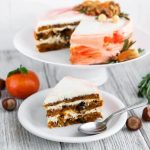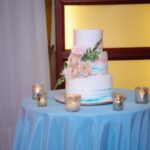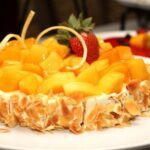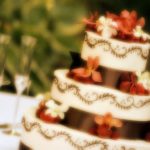Have you ever wanted to add an artistic touch to your cakes? Learn how to decorate a cake with paint, a trend that has taken the baking world by storm. Using edible paints, brushes, and stencils, this innovative technique allows bakers to create stunning designs and intricate details on their baked creations.
In recent years, decorating cakes with paint has become increasingly popular among baking enthusiasts and professionals alike. The ability to use edible paints opens up a whole new realm of creative possibilities, enabling bakers to express themselves through vibrant colors and intricate patterns. Whether you’re looking to add a pop of color or create sophisticated designs, painting on a cake offers endless opportunities for artistic expression.
Before diving into the world of cake painting, it’s essential to familiarize yourself with the tools and materials needed for this technique. From choosing the right type of edible paint – whether gel, powder, or airbrush – to properly preparing your cake for painting, each step plays a crucial role in achieving stunning results.
With the right techniques and tips at your disposal, you’ll soon be able to master the art of decorating a cake with paint and create show-stopping confections that will wow your friends and family.
Tools and Materials Needed
Decorating a cake with paint has become a popular trend in the world of baking, allowing bakers to showcase their creativity and create stunning edible masterpieces. To successfully decorate a cake with paint, you will need to have the right tools and materials on hand. The essential tools include edible paints, brushes, stencils, and other supplies that will help you achieve intricate designs and vibrant colors on your cakes.
Table: Essential Tools and Materials for Decorating a Cake With Paint
| Tools | Materials |
|---|---|
| Paint brushes of varying sizes | Edible paints in various colors (gel, powder, or airbrush) |
| Stencil sets for different patterns | Fondant or buttercream-covered cake |
| Pallets or mixing trays | Clean water for rinsing brushes |
When it comes to choosing edible paint for decorating a cake, you have several options available. Gel colors are vibrant and easy to use for detail work, while powder colors can be mixed with alcohol or clear extract to create a painting consistency.
Airbrush paint is ideal for creating smooth gradients and coverage over larger areas of the cake. Depending on your design needs and personal preference, selecting the right type of edible paint is crucial in achieving the desired outcome when painting on a cake.
Whether you are a beginner or an experienced baker looking to enhance your skills in decorating cakes with paint, having the proper tools and materials is key to success. By following step-by-step instructions and incorporating various techniques like stippling, marbling, and freehand painting, you can elevate the appearance of your cakes and impress your family and friends with beautiful artistic creations.
Remember to experiment with different colors, brush strokes, and designs to unleash your creativity when decorating cakes with paint.
Choosing the Right Type of Paint
When it comes to decorating a cake with paint, choosing the right type of edible paint is crucial in achieving the desired outcome. There are several options available in the market, including gel, powder, and airbrush paints, each with its own unique characteristics and applications. Understanding the differences between these types of edible paints will help you make an informed decision on which one to use for your cake decorating project.
Gel Paint
Gel paints are a popular choice for decorating cakes due to their vibrant colors and easy-to-use consistency. These paints come in small squeeze bottles or tubes, making them convenient for detailed work and intricate designs. Gel paints are versatile and can be used for both painting directly onto the cake surface or mixing with other mediums to create different effects. They work well on fondant-covered cakes and offer excellent coverage without bleeding.
Powder Paint
Powdered edible paints are another option for cake decorators looking to add color to their creations. These paints need to be mixed with a liquid, such as alcohol or clear extract, to create a paintable consistency. Powder paints are great for achieving soft and subtle shades on cakes, as well as for creating watercolor-like effects.
They can be layered for intensity or thinned out for a lighter touch. Powdered edible paints are ideal for brush painting but may require additional drying time compared to other types of paint.
Airbrush Paint
Airbrush edible paints offer a quick and efficient way to add color to cakes with precision and control. This type of paint is applied using an airbrush gun that sprays a fine mist of color onto the cake surface. Airbrush paints come in pre-mixed bottles or can be made by diluting gel or powder colors with a compatible liquid medium.
They are perfect for creating gradients, shading, and intricate patterns on cakes. Airbrushing allows decorators to achieve smooth finishes and blend colors seamlessly across the cake canvas.
Preparing the Cake for Painting
Decorating a cake with paint can add a unique and artistic touch to any baked creation. Before diving into the fun part of painting, it is essential to properly prepare the cake to ensure a smooth canvas for your artwork. Here are step-by-step instructions on how to prepare your cake for painting:
- Start by ensuring that your cake is completely cooled before beginning the decorating process. A warm cake can cause the paint to melt or run, resulting in an uneven finish.
- Once the cake has cooled, it is recommended to apply a crumb coat. A crumb coat is a thin layer of frosting that locks in any loose crumbs, creating a smooth base for painting. Spread a thin layer of frosting over the entire cake and chill it in the refrigerator until firm.
- After the crumb coat has set, you can proceed to apply a final layer of frosting to create an even surface for painting. Smooth out the frosting as much as possible, ensuring there are no visible bumps or imperfections on the cake.
Properly preparing your cake before painting not only ensures a professional-looking finish but also helps in achieving long-lasting results. Taking the time to follow these steps will make your painting experience more enjoyable and rewarding.
Remember, patience and attention to detail are key when it comes to preparing a cake for painting. By following these simple steps, you will be well on your way to creating stunning painted creations that will leave everyone impressed at your baking skills.
Techniques for Painting on a Cake
Decorating a cake with paint offers a unique and artistic approach to creating stunning desserts that are sure to impress. With the right tools, techniques, and a bit of creativity, you can turn an ordinary cake into a masterpiece worthy of any celebration. In this section, we will delve into the different techniques for painting on a cake, including stippling, marbling, and freehand painting, to achieve various decorative effects.
To successfully decorate a cake with paint, it is important to familiarize yourself with these key techniques:
- Stippling: This technique involves dabbing small dots of edible paint onto the surface of the cake to create a textured or speckled effect. It is great for adding depth and dimension to your design.
- Marbling: Marbling creates a beautiful swirled pattern on the cake by blending different colors of edible paint together. Simply apply multiple colors in random patches on the cake and use a brush or tool to swirl them together.
- Freehand Painting: For those who are confident in their artistic abilities, freehand painting allows you to create intricate designs directly on the cake without any stencils or guides. Simply use a fine-tipped brush and let your imagination run wild.
Each of these techniques offers a unique way to add personality and style to your cakes. Experiment with different combinations and styles to find what works best for your design. Remember that practice makes perfect, so don’t be afraid to try out new ideas and refine your skills along the way.
Whether you’re painting delicate flowers, abstract patterns, or intricate details on your cake, mastering these techniques will elevate your baking skills to new heights. With patience, practice, and creativity, you’ll soon be able to create edible works of art that are as beautiful as they are delicious.
So grab your brushes, pick up some edible paints, and get ready to unleash your inner artist on your next baking project. Practice these techniques and soon you’ll be wowing friends and family with stunning painted creations that are almost too pretty to eat.
Tips for Successful Cake Painting
Proper Brush Handling
When it comes to painting on a cake, one of the most important aspects to consider is proper brush handling. It’s crucial to use food-safe brushes specifically designed for decorating cakes. Make sure to clean your brushes thoroughly before and after each use to prevent any cross-contamination of colors. Additionally, always have separate brushes for different colors to avoid muddying your paint.
Color Mixing Techniques
Achieving the perfect shade or color combination for your cake painting requires some basic color mixing techniques. Start with primary colors and gradually mix them together in small increments to achieve the desired hue. Remember that edible paints tend to dry darker than they appear when wet, so it’s best to mix a slightly lighter shade than intended. Practice color mixing on a separate surface before applying it directly on the cake.
Practice Patience and Precision
Patience and precision are key factors in successful cake painting. Take your time when applying paint on the cake, especially when working on intricate designs or details. Allow each layer of paint to dry completely before adding another layer to prevent smudging or bleeding of colors. Use gentle and controlled strokes when painting, especially when doing fine lines or delicate patterns.
By following these tips for proper brush handling, color mixing techniques, and practicing patience and precision, beginners can ensure a smooth and successful experience when decorating a cake with paint. With practice and experimentation, you’ll soon be able to create beautiful and unique designs that will impress your family and friends.
Troubleshooting Common Painting Issues
When it comes to decorating a cake with paint, various issues may arise, but fret not as there are solutions to address them. One common problem that bakers encounter is bleeding colors. This happens when the colors on the cake start to run or bleed into each other, creating a messy look.
To prevent this issue, ensure that your base layer of paint is completely dry before adding another color on top. Additionally, you can try using less liquid in your paint mixture to minimize bleeding.
Uneven coverage is another challenge that painters might face while decorating a cake with edible paint. This occurs when some areas of the cake have more paint than others, leading to an unbalanced appearance. To fix this problem, make sure to apply the paint evenly across the cake surface by using gentle and consistent strokes. You can also use a larger brush for a smoother application of paint and better coverage overall.
In case you encounter air bubbles forming under the painted surface of your cake, gently prick them with a pin and lightly smooth out the area with a brush to remove any imperfections. With proper techniques and attention to detail, you can overcome these common painting issues and achieve a beautifully decorated cake that looks both appealing and professional.
| Common Painting Issues | Solutions |
|---|---|
| Bleeding Colors | Ensure base layer is dry before adding more colors, use less liquid in paint mixture |
| Uneven Coverage | Apply paint evenly with gentle strokes, use larger brush for better coverage |
| Air Bubbles | Prick bubbles with pin and smooth out area with brush for seamless finish |
Inspiration and Ideas
When it comes to decorating a cake with paint, the possibilities are truly endless. From intricate designs to bold and vibrant colors, painting on a cake allows for a level of creativity and personalization that is unmatched. The key to creating stunning painted cakes lies in not only the technique but also in the inspiration behind the designs. By exploring creative cake painting designs and gathering ideas from various sources, you can truly make your baked creations stand out.
One of the best ways to gather inspiration for your painted cakes is by looking at what other bakers and decorators are creating. Social media platforms like Instagram and Pinterest are treasure troves of beautiful cake designs that can spark your creativity. Whether you’re drawn to floral patterns, geometric shapes, or abstract art, studying different styles can help you develop your own unique aesthetic when it comes to cake painting.
Experimenting with different techniques and styles is also crucial in developing your skills as a cake painter. Try incorporating various brush strokes, blending colors together, or even using stencils to create intricate patterns.
Don’t be afraid to push yourself out of your comfort zone and try new things – after all, practice makes perfect when it comes to mastering how to decorate a cake with paint. With dedication, patience, and a willingness to learn from both successes and failures, you’ll be well on your way to creating stunning painted cakes that will wow everyone who sees them.
Frequently Asked Questions
What Can I Use to Paint on a Cake?
You can use food coloring gels, edible paints, or airbrush colors to paint on a cake. These options are safe for consumption and provide vibrant colors for your cake decorations.
How Do You Make a Cake Look Painted?
To make a cake look painted, you can use a variety of techniques such as hand-painting with food coloring gels or edible paints, using stencils for intricate designs, or airbrushing the cake for a smooth and professional finish. Each method offers a unique way to add artistic flair to your cakes.
Can I Use Edible Paint on Buttercream?
Yes, you can use edible paint on buttercream. Edible paints are specifically designed for use on food items, including buttercream cakes. Just make sure the paint is labeled as edible and safe for consumption before applying it to your buttercream creation.

Welcome to my blog about home and family. This blog is a place where I will share my thoughts, ideas, and experiences related to these important topics. I am a stay-at-home mom with two young children. I hope you enjoy reading it! and may find some helpful tips and ideas that will make your home and family life even better!





